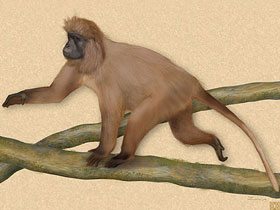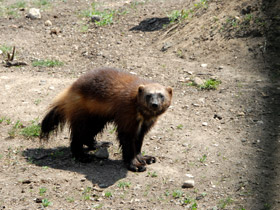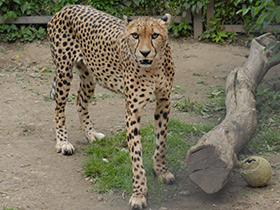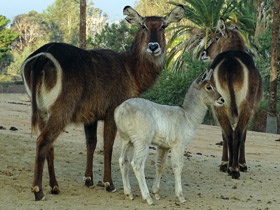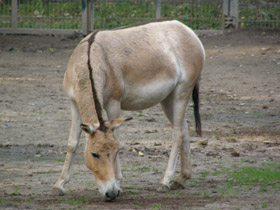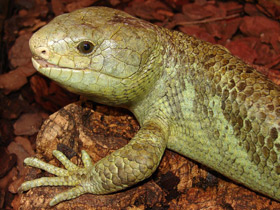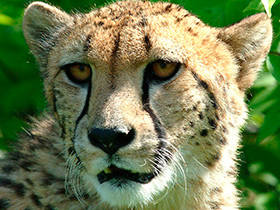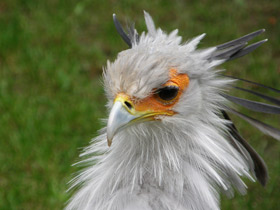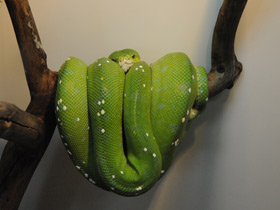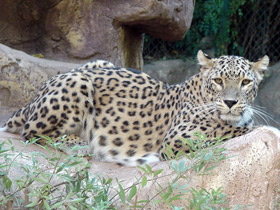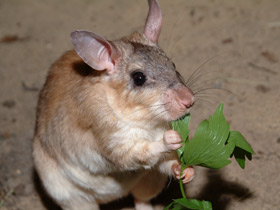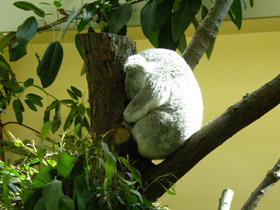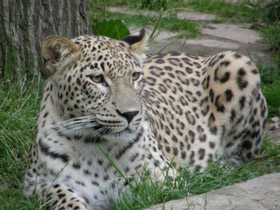The kipunji (Rungwecebus kipunji), the highland mangabey
The kipunji (Rungwecebus kipunji), also known as the highland mangabey, is a species of Old World monkey that lives in the highland forests of Tanzania. The kipunji has a unique call, described as a 'honk-bark', which distinguishes it from its relatives, the grey-cheeked mangabey and the black crested mangabey, whose calls are described as 'whoop-gobbles'.
The kipunji was independently discovered by researchers from the Wildlife Conservation Society, the University of Georgia, and Conservation International, in December 2003 and July 2004, making it the first new African monkey species discovered since 1984. Originally assigned to the genus Lophocebus, genetic and morphological data showed that it is more closely related to the baboons (genus Papio) than to the other mangabeys in the genus Lophocebus. Scientists subsequently assigned it to a new genus, Rungwecebus, named after Mount Rungwe. The kipunji is the first new monkey genus to be discovered since Allen's swamp monkey in 1923.
Zoologists were initially skeptical of the existence of the kipunji until its discovery, as traditional tales of the Nyakyusa people described the monkey as both real and mythical.
Description
Rungwecebus kipunji is a species of catarrhine primate in the family Cercopithecidae. It is a species of primate, identified in the monotypic genus Rungwecebus.
Males are 85 to 90 cm long and weigh between 10 and 16 kg. They have relatively long brown or light brown fur, white at the tip of the tail and on the belly. The hands of the upper limbs, feet and muzzle are covered with dark fur. There is a tuft on the head. These primates show no signs of sexual dimorphism in coat colour.
Rungwecebus kipunji has an unusual cry, described by researchers as a "growl-bark" cry, which distinguishes it from its close relatives Lophocebus aterrimus.
Distribution
Found in the montane forests of Tanzania: in Ndululu Forest Reserve, near Udzungwa Mountains National Park, and there is also an isolated population 400 km from Ndululu in Mount Rungwe and Kitulo National Park. The forests of Rungwe have been severely affected by human activities, which, if the situation deteriorates, could lead to the division of the population into three parts. The Ndululu forests are in a more stable condition, but the population there is smaller.
Conservation status
The International Union for Conservation of Nature has given the species a critically endangered status. Its range covers just 17.7 km2 in two isolated populations. The Ndululu population numbers only 75 animals, divided into groups of 15 to 25, while the Rungwe forests have about 1,000 animals in groups of 25 to 40.
Two predators are known to prey on these monkeys: the crowned eagle and the leopard, so the main threats to the survival of the species come from humans, mainly habitat destruction and hunting.
Threats
The kipunji faces multiple threats, primarily stemming from human activities such as logging, charcoal making, illegal hunting, and unmanaged resource extraction have been commonplace in the Rungwe-Kitulo forests, leading to habitat fragmentation and degradation. The narrow corridors linking different forest sections are encroached by farmers, further exacerbating the fragmentation of population units. Kipunjis are hunted using log traps and dogs, mainly during January to April in retribution for crop-raiding incidents. Both Kilombero Nature Forest Reserve and Mount Rungwe Nature Reserves lack adequate management resources to counter these threats.









